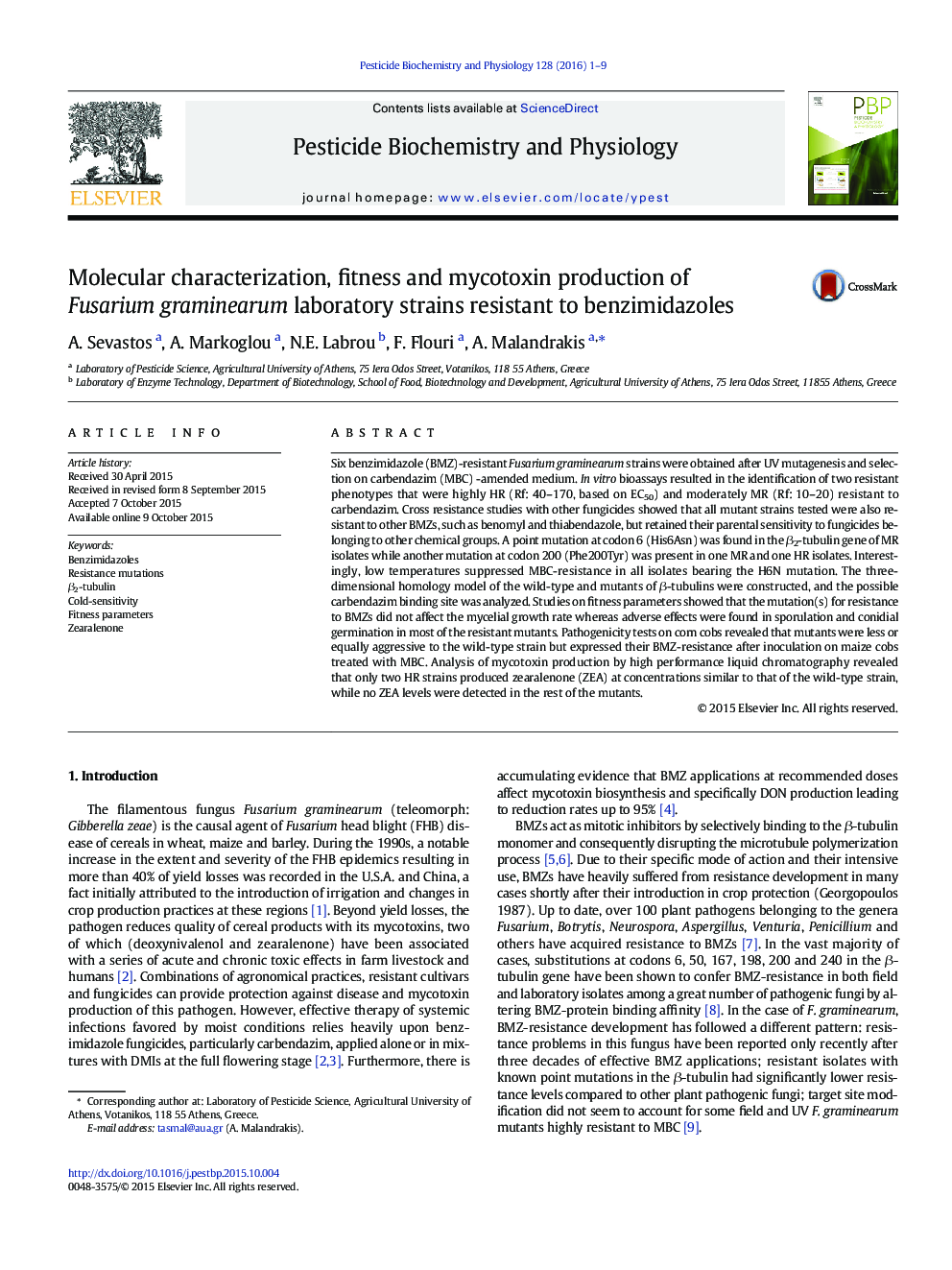| Article ID | Journal | Published Year | Pages | File Type |
|---|---|---|---|---|
| 2008980 | Pesticide Biochemistry and Physiology | 2016 | 9 Pages |
•Fusarium graminearum : low resistance frequencies to carbendazim•2 Phenotypes: highly resistant (HR), moderately resistant (MR)•MR-strains: 2 resistance mutations (F200Y, H6N) in the β2-tubulin gene•HR-strains: a) F200Y mutation partly responsible or b) no mutation found•All mutants: reduced pathogenicity, sporulation•H6N-bearing strains: cold suppressed
Six benzimidazole (BMZ)-resistant Fusarium graminearum strains were obtained after UV mutagenesis and selection on carbendazim (MBC) -amended medium. In vitro bioassays resulted in the identification of two resistant phenotypes that were highly HR (Rf: 40–170, based on EC50) and moderately MR (Rf: 10–20) resistant to carbendazim. Cross resistance studies with other fungicides showed that all mutant strains tested were also resistant to other BMZs, such as benomyl and thiabendazole, but retained their parental sensitivity to fungicides belonging to other chemical groups. A point mutation at codon 6 (His6Asn) was found in the β2-tubulin gene of MR isolates while another mutation at codon 200 (Phe200Tyr) was present in one MR and one HR isolates. Interestingly, low temperatures suppressed MBC-resistance in all isolates bearing the H6N mutation. The three-dimensional homology model of the wild-type and mutants of β-tubulins were constructed, and the possible carbendazim binding site was analyzed. Studies on fitness parameters showed that the mutation(s) for resistance to BMZs did not affect the mycelial growth rate whereas adverse effects were found in sporulation and conidial germination in most of the resistant mutants. Pathogenicity tests on corn cobs revealed that mutants were less or equally aggressive to the wild-type strain but expressed their BMZ-resistance after inoculation on maize cobs treated with MBC. Analysis of mycotoxin production by high performance liquid chromatography revealed that only two HR strains produced zearalenone (ZEA) at concentrations similar to that of the wild-type strain, while no ZEA levels were detected in the rest of the mutants.
Graphical abstractFigure optionsDownload full-size imageDownload as PowerPoint slide
